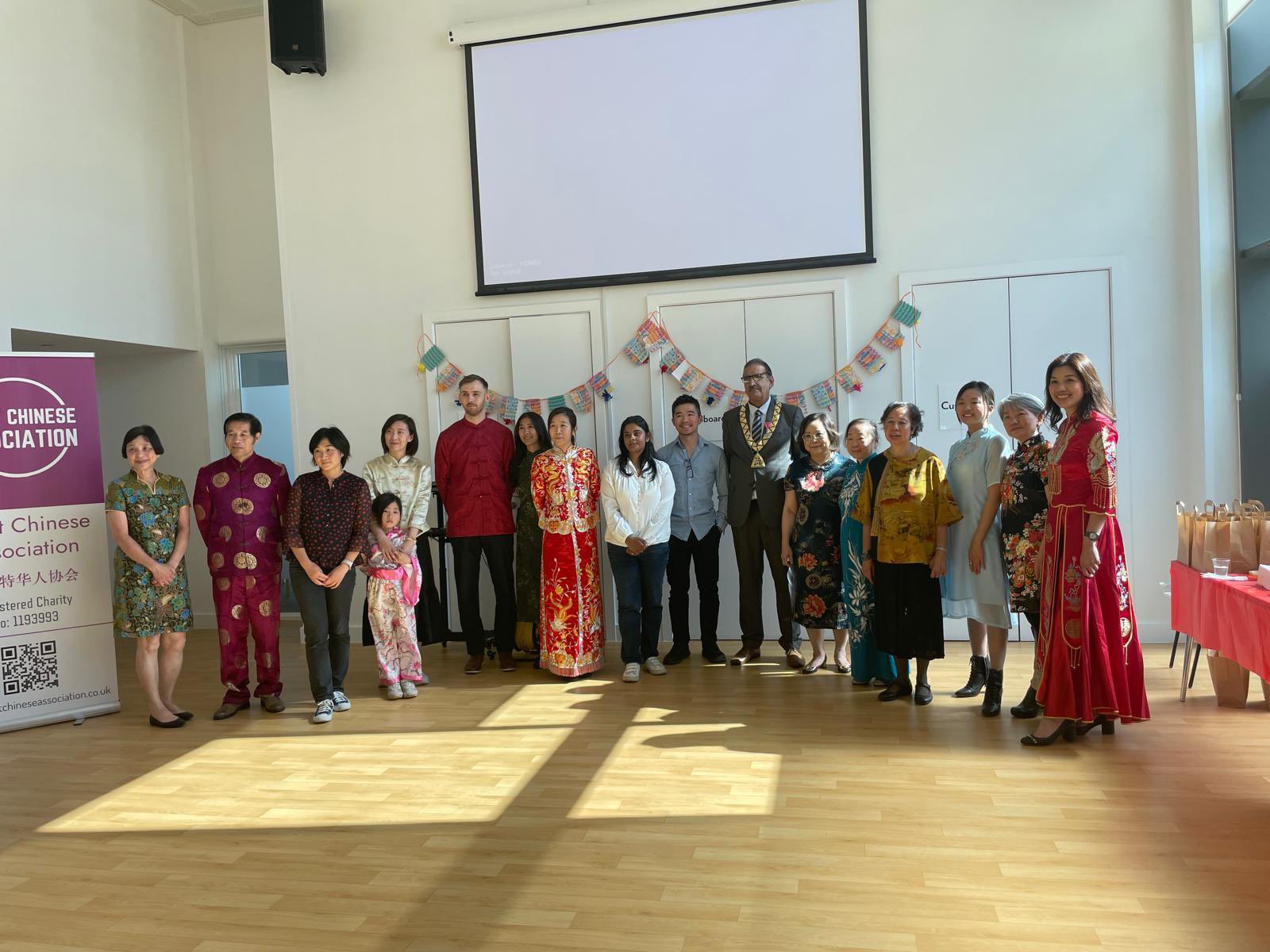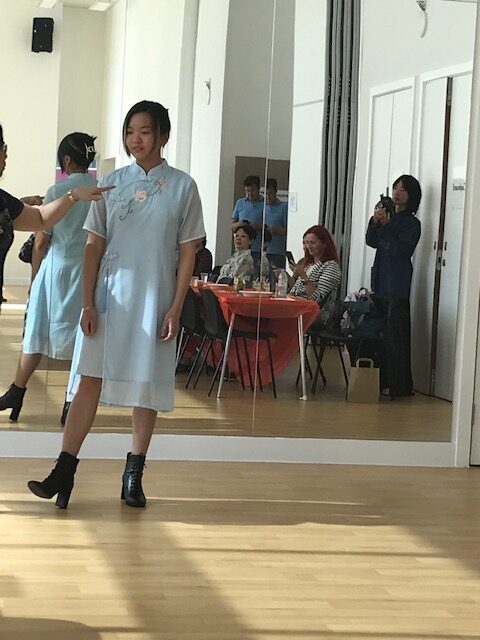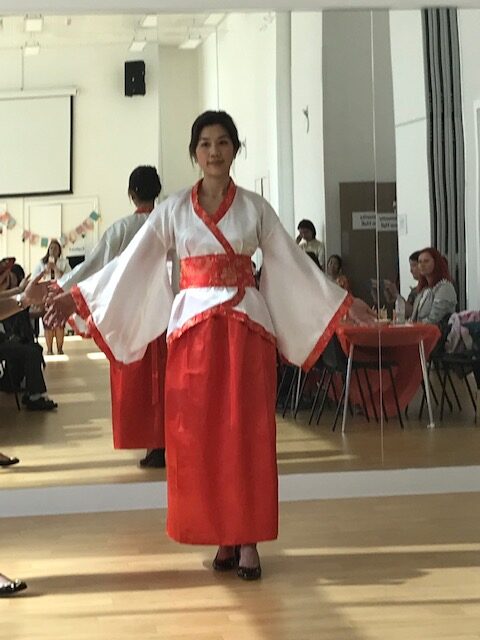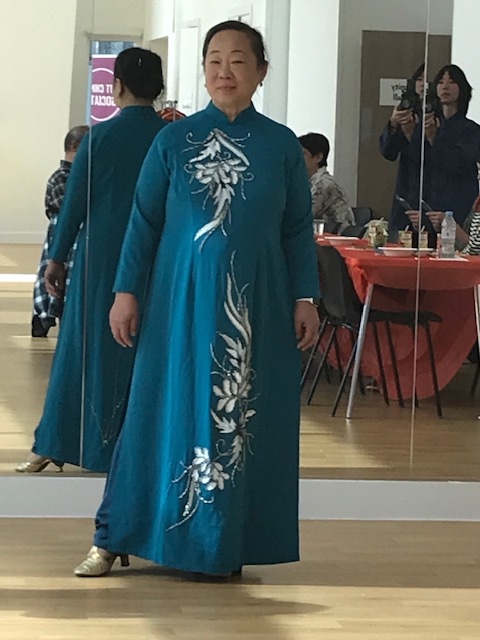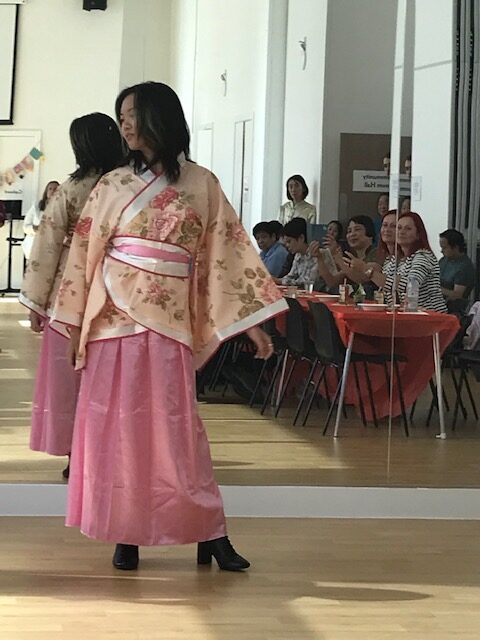Brent Chinese Association
Nationality / Culture: Chinese/ Chinese DiasporaProject Summary
Chinese Take Away Message. Exploring the traditional clothing or costumes of diasporic Chinese Communities.
Heritage Focus
To explore the traditional clothing or costumes of diasporic Chinese communities. Traditional clothing/costumes we collected, conserved and celebrated were:
- Cheongsam and Qipao a Chinese dress worn by women inspired by the Qizhuang, the ethnic
- clothing of the Manchu people
- Hanfu traditionally consists of a paofu robe, or ru jacket worn as the upper garment with a qun skirt commonly worn as the lower garment, with accessories such as headwear, footwear, belts, jewelleries, yupei and handheld fans.
- Wedding Bride and Groom Wear of the Qing dynasty
- Traditional Chinese Male Clothing – Tang Jackets or Tangzhuang in the late Qing Dynasty.
- A child’s douduo “belly wrap”, popularized in the Ming Dynasty to the Qing Dynasty.
Most young people and adults of Chinese ethnicities who identify themselves as Chinese are part of the global Chinese diaspora. They appreciate Chinese food. However, when it comes to clothing and costumes, they do not know much of the evolution and development of their traditional garments.
Project Description
This project set out to record oral stories capturing people’s experiences of traditional Chinese clothing, costumes, and accessories. Participants visited cultural sites such as the Victoria C Albert Museum and China Exchange to view Chinese costumes on display and learn more about their significance.
The group also organised gatherings to share personal knowledge and stories related to Chinese clothing, fostering intergenerational dialogue and community connection.
The project culminated in a final celebration event at Willesden Library or the Grand Union Community Hub, where costumes were showcased and the wider community had the opportunity to deepen their understanding of Chinese dress and heritage.
Spotlight Story: Tradition and Transformation
The workshops provided space for elders to share memories of traditional Chinese garments – such as the qipao – and for younger generations to reflect on how these styles connect with modern identity.
Participants explored how fabrics and styles were adapted when migrating to the UK, and the pride attached to “dressing up” for community events, Lunar New Year, and weddings.
One elder participant shared: “My mother made me a red qipao for my engagement. It was stitched with gold thread – a symbol of luck. I still keep it, although it no longer fits.”
Intergenerational Dialogue
Younger attendees listened to stories of sewing traditions, family businesses in Hong Kong and Guangzhou, and how fashion was used to express resistance or conformity depending on the era.
The project also showcased adaptations of traditional dress to UK climates and lifestyles. For example, one participant spoke about adapting silk jackets with padded linings for British winters – maintaining heritage while meeting new needs.
Impact
The experience fostered connection and empathy across generations. It also helped challenge negative stereotypes about older Chinese community members being ‘silent’ or ‘reserved’ – revealing a rich, vocal culture of pride and reflection.
More from London Fashion Week
Afghan Association of London
(Afghanistan/ Afghani)
Best of Brazil CIC
(Brazil/ Indigenous Brazilian)
Brent Chinese Association
(Chinese/ Chinese Diaspora)
Community Stars UK
(India/ Goan)
Higher Potential
(UK/ Caribbean Youth, 70s/80s)
Inspired
(Iran/ Iranian)
Iraqi Welfare Association
(Iran/ Iraqi)
Kojo Baiden
(Africa)
Echovibe Hub
(Romania/ Romanian)
Reviving Links
(Somalia/ Somalian)
Tamil Association of Brent
(Sri Lanka/Tamil)
WISE
(Caribbean /Dominica)
Your Heritage Journey Starts Here
Got a question? Get in touch with our friendly and helpful Customer Services Team

